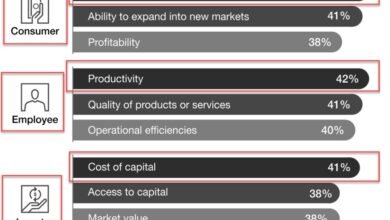
By | Deinah Storm
In today’s e-commerce era, consumers have two main concerns: excellent service and security. As the world of commerce transcended to the digital world, so did the problems that it encounters. One of its biggest challenges is fraudulent activities that target consumers.
Online fraud has long been a thorn to the side of businesses, financial institutions, and of course, its usual targets, the consumers. Cybercriminals who engage in fraudulent acts either proceed in deceiving an unsuspecting individual to obtain their personal information or find ways to steal them from businesses themselves. They can use many ways to work around systems to keep data safe, particularly with the advancements in technology nowadays.
Thankfully, these advancements can also work in favor of businesses as well. These expand the already many methods of preventing online fraud. Here are other effective ways that businesses can use to protect consumers from falling victim to online fraud.
Know what information you have
Fraudulent acts aimed at consumers are committed to stealing information that will be utilized to steal their money. It all begins with obtaining details such as credit card numbers and account passwords. Hence, companies should start with the information they have to see the scope they need to work on.
Creating an inventory of all devices that your business uses to store sensitive data is the way to go. Make sure to cover all the sources of information where you obtain them. This literally means anything, and everywhere you store sensitive information.
Different types of information are exposed to varying risks, which is why creating an inventory of all the devices you use as information storage can help. Doing that will give you a clear picture of all the crucial details. These details include who sends personal information, how you receive them, what kind of information, and who has access to them.
Once your inventory is complete, you can see where your data protection schemes are lacking and improve them accordingly. Remember that a privacy breach will increase the risk of fraud, which may lead to a consumer class action.
Keep what you need and delete what you don’t
Scale down and only keep sensitive information from consumers that you need to use. If your business doesn’t have a legitimate business need for it, delete it. Here are some tips for identifying which information you need and scaling them down:
- If your company has a mobile application, ensure that it only has access to essential functionality and data. Don’t collect anything that isn’t integral to your products or services.
- Lessen the people that can access all sensitive information. Your employees should only have access to data relevant to their job description.
Scaling down on sensitive data will also alleviate the pressure from your business. Remember that every piece of information you collect is an added responsibility. You must protect all the data you retain.
Implement proper information disposal rules. Base them on information sensitivity, costs and benefits of each disposal method, and changes in technology.
Tighten your security
You already know where you store all pertinent information from consumers and their types. Using that knowledge, you can now enhance your overall security. Although this article talks about online fraud, you must consider every device, including physical storage, since your business also makes hard copies of specific data.
However, since the topic is about online fraud, your general network security is in question. The key is to implement security measures that cover the scope of your entire network. Effective action is to be proactive; detect unusual behavior to anticipate any possible issue that may occur.
You can use machine learning that can detect suspicious actions in individual orders. Using those tools will help in identifying orders made using stolen accounts or credit card data. It can also track purchasing patterns to look for possible fraudulent activities.
The data that you gather from machine learning security tools can be analyzed to spot online fraud. It also helps identify organized fraud. Criminal groups working with a set of accounts with stolen personal information will be easier to find through machine learning data analysis.
Another proactive method you can use is to identify all the devices where you store pertinent data. Assess each of their vulnerabilities, and you’ll be able to know which security measure is appropriate to safeguard them. You can begin by placing encryptions on all devices used for your business.
Encryptions will protect your customers’ data from prying eyes online. Besides encryption, you should also keep all malware protection software updated. Computer viruses are also employed to hack and commit online fraud.
If you employ two-factor authentication, see if your cart abandonment rate is increasing. If it is, you should look into it because it’s a red flag for online fraud.
You can also use firewalls to keep your computers safe while connected to the internet. This will make it tougher for hackers to penetrate your devices while you’re online.
Identify red flags
Many red flags indicate online fraud. If a fraudulent individual or an organized group managed to sneak past your initial, proactive measures, your employees should know how to identify red flags. Educate them about these signs, so they know what to look for.
A typical red flag of online fraud is any transaction coming from hosted data centers or servers. Fraudsters utilize these servers to route traffic using data that they stole. It disguises the stolen information to use them without making businesses aware that it’s from another individual.
You should also take notice of fraud committed in smaller transactions. There have been numerous cases wherein businesses lose a large sum of profit because of repetitive fraudulent transactions. Once you realize something suspicious about multiple transactions, immediately attend to them to address the problem.
Protect consumers from online fraud
All businesses are vulnerable to online fraud nowadays. The best approach to it is to do whatever it takes to secure consumer information. Do that by applying the practicing vigilance, keeping track of everything you use to collect sensitive data, and investing in better security measures.
Author Bio:

Deinah Storm used to work in the corporate world as a marketing affiliate. She quit her job to pursue her passion for writing, but to this day, Deinah is committed to educating consumers about the different marketing scams and how to avoid them






